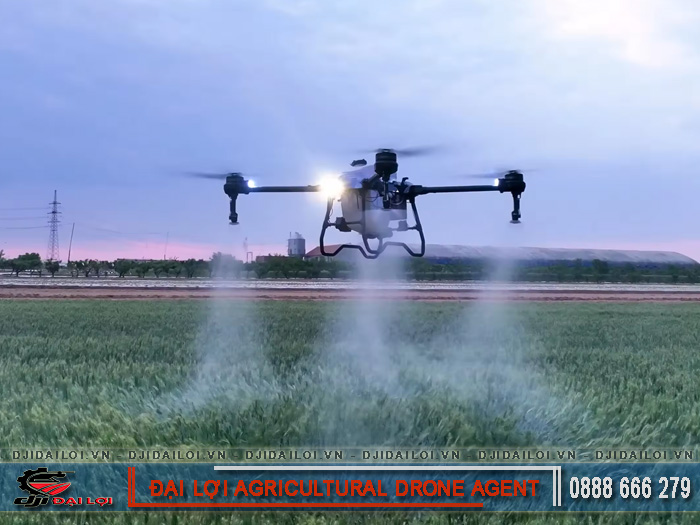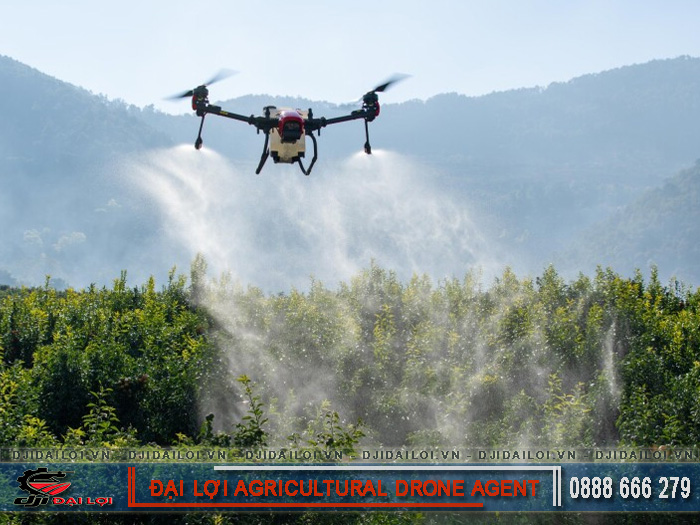
Investing in unmanned aerial vehicles for spraying is no longer strange in modern agriculture, especially as the demand for mechanization continues to rise. However, before spending tens or even hundreds of millions of VND, both farmers and agribusinesses share the same concern: how much does a pesticide-spraying flycam cost, which model is reasonable to buy, and what are the potential risks?
This seemingly simple question actually opens the door to a series of critical decisions about investment efficiency, device performance, suitable brands, and payback period.
The price of a pesticide-spraying flycam is not fixed, ranging from about 80 million to over 300 million VND depending on several key factors below:
Four-propeller flycams are generally cheaper than six- or eight-propeller ones. More propellers mean higher lift capacity and better stability in windy terrain, but the cost increases by about 20-30%.
Flycams with a 10L tank cost less than those with 20L or 30L, but they must make more flights to cover large fields. High-efficiency models (spraying 15-25 ha/day) usually cost over 200 million VND.
Models equipped with GPS RTK, obstacle-avoidance sensors, and automated flight path programming are significantly more expensive but help reduce labor, improve accuracy, and save time.
Products from the DJI Agras brand from China are very popular in Vietnam due to their competitive price and easy-to-replace parts. Domestic or assembled models are about 10-15% cheaper but may require careful consideration regarding durability and warranty.
Prices vary greatly depending on performance, brand, and integrated technology. The table below helps you visualize the current pricing structure:
|
Tank capacity |
Spraying performance |
Average price (VND) |
|---|---|---|
|
10L - 12L |
6-10 ha/day |
85 - 120 million |
|
16L - 20L |
12-18 ha/day |
130 - 180 million |
|
25L - 30L |
18-25 ha/day |
190 - 270 million |
→ Models above 20L are typically used for large farms and can significantly reduce labor costs.
|
Brand |
Price range |
Key advantage |
|---|---|---|
|
DJI Agras |
120 - 250 million |
Stable, easy to repair, economical |
|
XAG |
150 - 280 million |
High automation, durable |
|
Hybrid domestic |
85 - 150 million |
Flexible configuration, affordable |
→ Those interested in how much a pesticide-spraying flycam costs should clearly define their needs before comparing options to avoid choosing the wrong segment.
In addition to the purchase price, users should also calculate the following expenses:
→ The total initial investment can be 20-30% higher than the base price if not carefully planned.

Many people wonder how much a pesticide-spraying flycam costs not only because of the high initial expense but also because they want to know when they can recover their investment. Below are some actual results from farms that have implemented it:
→ These examples show that, when needs and capacity are calculated correctly, investing in a pesticide-spraying flycam not only saves costs but also boosts productivity significantly.
Depending on farming scale, budget, and terrain, you should choose the equipment that best fits your situation:
→ For each scale, the price varies — you should carefully assess your needs to determine how much a pesticide-spraying flycam is reasonable for your case.
The agricultural flycam market in Vietnam is expected to grow 20-30% in the next two years, driven by government support and the rising demand for automation.
→ Those considering “how much a pesticide-spraying flycam costs” should monitor the market early next year to choose the optimal purchase time.
In conclusion, the price of a pesticide-spraying flycam is not fixed—it depends on performance, brand, technology, and usage purpose. However, investing in the right equipment for the right need can save farmers tens of millions of VND each year, increase productivity, and ensure faster payback. To make an effective choice, identify your cultivated area, budget, operating capacity, and ideal investment timing. If uncertain, start by renting a flycam spraying service to evaluate real efficiency before long-term investment.
It’s better to consider renting instead of buying, as the cost of a new flycam may not be efficient for small-scale farms.
Because it integrates specialized systems such as a spraying mechanism, GPS navigation, altitude sensors, auto-routing, and other agricultural-grade technologies.
Around the end of the Winter-Spring season (April-May) or after the Summer-Autumn crop (September-October), when there are seasonal discounts and clearance sales.
Plan flights via GPS mapping, check battery condition, wind level, and spraying speed, and always monitor weather conditions to achieve the best results.